Health
Taxonomy Term List
Readiness for the National Adaptation Plan Process in Argentina
The project supported the Government of Argentina in establishing its adaptation planning process. This involved identifying gaps, capacity building, and integrating climate change considerations across national, regional, and local levels. By doing so, the project facilitated the assessment and reduction of vulnerability to the adverse effects of climate change by integrating climate change adaptation into the country's development strategies.
The scope of the project included the preparation of the National Adaptation Plan (NAP) with a regional and multi-sectoral approach. Additionally, it involved the development of a system to monitor and assess adaptation needs and measures under the Law 27250 Minimum Standards for Adaptation and Mitigation to Climate Change (Ley de Presupuestos Mínimos de Adaptación y Mitigación al Cambio Climático). To achieve the proposed outcomes, the project developed a communication strategy on climate change adaptation, carried out a series of studies to identify adaptation options, and supported inter-sectoral and inter-jurisdictional collaboration within the framework of the National Cabinet on Climate Change (NCCC), the Federal Environment Council (COFEMA), and the National System for Comprehensive Risk Management (SINAGIR).
In recent years, Argentina has made decisive progress in planning and implementing measures to adapt to climate change. The National Communications on Climate Change have made valuable contributions, such as providing information, conducting diagnoses, and identifying various information gaps. Within the framework of the National Climate Change Cabinet (NCCC) work, several sectoral initiatives that are directly or indirectly related to climate change adaptation were identified, as well as other information and capacity needs.
This project, funded by the Green Climate Fund (GCF) NAP Readiness Programme, aimed to deepen this work by supporting National Adaptation Plan (NAP) development. This involved facilitating the evaluation and reduction of vulnerability to the adverse effects of climate change by integrating climate change adaptation into Argentina’s development strategies.
The “Readiness for the National Adaptation Plan Process” project was launched in March 2019 to support Argentina’s efforts to assess and reduce climate change vulnerability by integrating climate change adaptation into the country's sustainable development. To achieve this goal, the project aimed to build adaptive capacity and resilience. It sought to integrate climate change adaptation into both new and existing policies, programmes, activities, and development planning processes and strategies across relevant sectors at different levels.
In particular, the project supported the Government of Argentina to:
1) Establish a national process to coordinate adaptation planning at all relevant scales with a medium and long-term perspective.
2) Identify capacity gaps and strengthen capacities for adaptation planning and implementation, integrating adaptation to climate change into national, provincial, and municipal development planning processes.
3) Support the preparation of the NAP with a regional and multi-sectoral approach in the framework of the National Climate Change Cabinet.
4) Establish a system for monitoring and assessing needs and adaptation measures.
5) Design a communication strategy on adaptation to climate change, focusing on the most vulnerable populations and improving climate information services; and
6) Support inter-sectoral and inter-jurisdictional collaboration within the framework of the National Cabinet on Climate Change.
In most of non-Patagonian Argentina, the average temperature has increased up to half a degree between 1960 and 2010, with smaller increases in the center of the country. These changes have already affected natural and human systems, and according to climate projections, impacts will intensify. More frequent and intense rainfall has resulted in more frequent floods, while dry winter periods have become longer in the west and north of the country. This has adversely affected water availability for some populations, increased the risks of grassland fires, and caused livestock stress.
Argentina has committed to addressing climate change adaptation systematically and inclusively through actions and initiatives articulated in its National Adaptation Plan, its 2016 National Determined Contribution (NDC), and it’s second NDC in 2020. The NDCs and further work implemented within the framework of the National Cabinet on Climate Change detected various information gaps and sectoral initiatives that are directly or indirectly linked to climate change adaptation. The project focused on addressing these identified gaps, including establishing a baseline for the country's adaptation situation and initiating a participatory planning process.
The project goals were achieved through three main outcomes and their corresponding activities.
Outcome 1: Institutional strengthening and coordination for the formulation and implementation of the NAP process
Activities under this outcome focused on initiating the NAP process at the national level under the framework of Law 27250 and focused on strengthening governance and institutional coordination for adaptation planning. This involved developing an appropriate strategy and relevant institutional arrangements and support, such as the formalization of the External Advisory Council through consultation with representatives of civil society organizations, political parties, academia, and Indigenous people, and setting clear groundwork. The strategy outlined clear responsibilities for government ministries and departments, specified milestones and expected outputs of the NAP process, and improved coordination and cooperation mechanisms. The approach included participatory and inclusive approaches with Indigenous communities and others to identify climate risks, impacts, and subsequent mitigation strategies. This extended to the participatory formulation of the National Adaptation Plan and support for provinces in developing Subnational Response Plans. Regulatory support further strengthened the National Climate Change Cabinet, which approved the National Plan for Climate Change Adaptation and Mitigation.
Outcome 2: Awareness raising and capacity building
This outcome built capacities to reduce vulnerability to climate change and facilitate the integration of adaptation into development. A comprehensive education, awareness, and communication strategy in climate change adaptation was created encompassing various components, such as education, awareness, access to public information, citizen participation, culture, and international cooperation. A national-level social perception study facilitated the elaboration of this strategy and evaluated audience needs and preferences. Moreover, the Climate Risk Maps Platform (SIMARCC) was updated, functioning as an interactive tool that identifies climate change risks by illustrating communities and ecosystems with the highest socio-environmental vulnerability.
Training was conducted to promote the evaluation, planning, and implementation of adaptation measures. Workshops and training sessions strengthened subnational climate teams, equipping officials at that level with the necessary tools for the development of adaptation plans. Furthermore, private sector engagement was catalyzed through the launch of the Climate Action Agreement with the Private Sector. This aimed to facilitate collaboration between public and private sectors to achieve Argentina’s climate commitments through a platform for exchange and continuous training.
Outcome 3: Baseline definition; formulation of NAPs; implementation, monitoring and reviewing
Outcome 3 involved broad climate risk analyses identifying ‘adaptation deficits.’ This included vulnerability assessments at specific planning levels within the national context that can inform impactful adaptation solutions.Various studies were conducted on topics such as transport supply chains, regional economies, social vulnerability, economic impacts of climate change, health, and cultural heritage to facilitate risk analysis and identify adaptation options. The project also supported the elaboration of provincial adaptation plans by hiring individual consultants to strengthen the provincial climate teams. Risks and needs at the regional level were identified following economic loss estimates and sector-specific damage assessments.
In collaboration with provincial teams and civil society, a multi-criteria analysis tool was developed to prioritize adaptation measures within the NAP. Measures were prioritized based on their contribution to short- and long-term sustainable socioeconomic development, costs, effectiveness, and efficiency at national and subnational levels. Additionally, efforts were made to identify existing adaptation initiatives within national government areas. Moreover, a strategy for implementing and monitoring the NAP, involving priority measures, was developed. This included the design of the NAP monitoring, evaluation, and learning (MEL) system.
Outcome 1: Institutional strengthening and coordination for the formulation and implementation of the NAP process.
Outcome 2: Awareness raising and capacity building.
Outcome 3: Baseline definition, formulation of NAPs, implementation, monitoring and reviewing.


National Adaptation Plan to advance medium and long-term adaptation planning in Armenia
With financing from the Green Climate Fund, the 'National Adaptation Plan (NAP) to Advance Medium and Long-term Adaptation Planning in Armenia' project supported the Government of Armenia in formulating a national plan for climate change adaptation. Through an iterative process, the project focused on strengthening foundational capacities with the aim of institutionalizing them for long-term sustainability.
The project aimed to address existing barriers, facilitate the prioritization of climate change adaptation investments in priority sectors—such as water resources, agriculture, energy, health, tourism, and human settlement—and increase the identification of financing options. Through the development of the NAP process, Armenia laid the groundwork for the systematic and iterative identification of medium- and long-term risks. The country not only established adaptation priorities but also designed specific activities to ensure that no one is left behind in its efforts to achieve the goals outlined in the Paris Agreement and the 2030 Agenda for Sustainable Development.
In tandem with the localization of the Sustainable Development Goals (SDGs), the NAP process contributed to the formulation of corresponding national climate-responsive indicators and targets.
The Government of Armenia launched its national stakeholder consultations for the national adaptation plan (NAP) process in June 2016. A preliminary action plan for NAP implementation was formulated during the stocktaking exercise and approved by the representatives of key sectors and the Ministry of Nature Protection. The government recognizes the NAP process as a key step to achieving the adaptation objectives of its 2015 Nationally Determined Contribution (NDC).
The NAP seeks to address the main challenges to the integration of climate change adaptation into national, sectorial, and local government planning and budgeting, as identified in the 2016 stakeholders' consultations and the NAP Stocktaking report. Focus has been given to strengthening foundational capacities for adaptation and ensuring that they are institutionalized for long-term sustainability (beyond the life of the project). It was expected that at least two NAP iterations would be required for a complete and comprehensive mainstreaming of climate change adaptation into the national development framework and into the development plans of all sectors.
NDCs and NAPs
Armenia’s vulnerability to climate change requires greater investments and integration of climate change adaptation and disaster risk reduction. In 2016, the government began discussions regarding the NAP process through national consultations and a rapid stocktaking exercise. This stocktaking provided a qualitative assessment of the institutional framework and capacities relevant to the NAP process.
The NAP is fully aligned with the adaptation component of the NDC and is recognized as a pivotal element in establishing a constructive feedback loop between Armenia's national and international decision-making on climate change.
By embarking on the NAP process, Armenia laid the groundwork for a systematic and iterative identification of medium- and long-term risks, climate change adaptation priorities, and specific activities aimed at fostering climate adaptive and resilient growth in key sectors. This shift from ad-hoc, project-based approaches to a more coherent and strategic climate change adaptation approach, integrated with the implementation of the Paris Agreement, the Sendai Framework, and the 2030 Agenda for Sustainable Development, positions Armenia to achieve a lasting paradigm shift in reducing the climate risks it faces.
Stakeholder Consultations
As an integral part of the NAP process, a comprehensive stakeholder communication and engagement plan, including a gender action plan, was developed. This plan aimed to ensure broad consultation and involvement of diverse stakeholders at all stages of the NAP. Outreach encompassed sensitization, consultations, and training workshops, tailored to meet stakeholders' specific needs for successful implementation. The overarching goal of these engagement activities was to enhance stakeholder ownership, raise awareness, and bolster knowledge regarding the crucial role of climate adaptation in addressing climate change impacts for sustained, long-term engagement. Stakeholders spanned government institutions, financial and technical partners, international and national non-governmental organizations, and local civil society.
Results
Key project achievements include:
Improved Legislative and Policy Frameworks:
- Integration of climate change considerations into governance mechanisms through the National Action Program of Adaptation to Climate Change and the List of Measures for 2021-2025.
- Updates to the structure, mandate, functions, and rules of procedures of the Inter-agency Coordination Council on Climate Change.
- Formation of three permanent working groups supporting the Inter-Agency Coordination Council.
Integration into Legal Instruments and Sector Strategies:
- Amendments to the Water Code addressing climate change risks, vulnerability, adaptation, and water use permit allocation.
- Draft amendments to the Environmental Impact Assessment law to consider climate change-related risks.
- Development and approval of the "2022-2026 Climate Change Adaptation Plan in the Water Resources Sector."
Territorial Governance Improvement:
- Climate risk and vulnerability assessments and adaptation plans for two regions (Tavush and Shirak) and Yerevan city.
- Development and acceptance of guidelines for climate change adaptation planning at the local and regional levels.
Sector Governance Enhancement:
- Revision of irrigation norms in Ararat Valley with recommendations for replication.
- Updates to River Basin Management Plans for the Southern and Ararat River Basin districts.
- Recommendations on institutional arrangements for mudflow risk management.
- Various assessments, including economic cost-benefit analysis and feasibility studies for reservoirs.
Capacity Building, Awareness, and Education:
- Development of guidelines on urban green infrastructure, landslide risk assessment, and climate change adaptation in agriculture.
- Stakeholder communication and awareness strategy.
- Organizing over 90 workshops, trainings, and public events involving more than 3,200 participants.
- Numerous media interviews and stakeholder roundtable discussions initiated.
NAP Process Continuity:
- Assessment and strategy for private sector engagement in climate change adaptation to strengthen the enabling environment for private sector investments
- Design of water resources and agriculture sectors adaptation concept notes.
- Development of a methodology and guideline for evaluating the NAP process monitoring and evaluation (M&E).
- Establishment of MRV frameworks for climate mitigation and adaptation.
Output 1: Gaps assessed and national mandate, strategy and steering mechanism established
Output 2: Climate evidence and knowledge-base for the compilation of a NAP strengthened
Output 3: NAP implementation facilitated
Output 4: Mechanisms for Reporting, Monitoring and Review of NAPs and adaptation progress in place
Output 5: Funding strategy for the NAP and CCA formulated
The project's first output focuses on identifying information and capacity gaps while enhancing synergies and coordination across sectorial initiatives. This involves strengthening both vertical and horizontal synergies, reducing duplication of effort, and ensuring a more cohesive approach to integrating Climate Change Adaptation (CCA) responses into development planning.
Outputs 2 and 3 aim to bolster institutional, functional, and technical capacities to plan for gender-sensitive CCA. Additionally, the project seeks to enhance the existing climate-related knowledge base for more consistent assessments of climate risks, vulnerabilities, and impacts. The ultimate goal is to improve implementation at both national and local levels.
Output 4 is dedicated to establishing climate change adaptation monitoring capacity. The objective is to efficiently integrate CCA into both national and sectorial planning and management processes.
Output 5 involves the development of a CCA financing strategy. This includes supporting private sector engagement through a comprehensive assessment of the enabling environment and barriers, aligning with Armenia's priorities for private sector development.
Armenia steps up adaptation to the climate crisis (2022)
Possibilities and promotion mechanisms of secondary water use in Armenia discussed with stakeholders (2022)
Video: Climate change adaptation in agriculture in Armenia (2022)
Public hearing on updates of Ararat Basin Management Plan held in the frame of UNDP-GCF NAP project (2022)
Public hearing on updates of Southern Basin Management Plan held in the frame UNDP-GCF NAP project (2022)
"Climate Change and Women in Armenia” awards ceremony announced in the frame of UNDP-GCF NAP project (2022)
Climate change and adaptation awareness raising campaign in the frame of UNDP-GCF NAP project (2021)
RA National Adaptation Plan submitted to UNFCCC Secretariat (2021)
Draft RA water sector adaptation plan presented and discussed in the frame of UNDP-GCF NAP project (2021)
Climate Change challenges and opportunities present in Tavush discussed during a regional visit (2021)
Mudflow risk management in Armenia in the center of attention of the UNDP-GCF NAP project (2020)
UNDP-GCF NAP Project continues raising awareness on climate change adaptation processes (2019)
National Adaptation Plan development process continues in Armenia (2019)
NAP Project Inception Seminar (2019)

Integrating Climate Change Risks into National Development Planning Processes in Haiti
The project sought to strengthen institutional and technical capacities in Haiti to iteratively develop a National Adaptation Plan (NAP). Additionally, it aimed to integrate climate change adaptation into national and sub-national coordination, planning, and budgeting processes. This objective was achieved by advancing existing frameworks and systems, enhancing the capacities of various stakeholders to effectively contribute to the process, and establishing a mechanism to sustain the NAP process beyond this project.
Funded by the Green Climate Fund (GCF) Readiness Programme, the "Integrating climate change risks into national development planning processes in Haiti" project supported the Government of Haiti in strengthening institutional and technical capacities for iterative development of the National Adaptation Plan (NAP). This included integrating climate change adaptation into national planning and budgeting processes.
The project built on lessons from the National Adaptation Programme of Action (NAPA) implementation, as well as complementary activities currently underway in Haiti to avoid duplication of efforts. By integrating climate change adaptation into development plans, the project sought to align inclusive climate change adaptation priorities with the country’s visionary Strategic Development Plan (PSDH), National Land Use Plan (SNAT) and Disaster Risk Reduction Plan and Strategy.
As the only Least Developed Country (LDC) in the Caribbean region, Haiti’s primary economic sectors (i.e., agriculture, forestry, and fishing) are heavily affected by climatic events. As of 2023, nearly 59 percent of Haiti’s population lives below the poverty line, many of those people living in extreme poverty. According to the World Bank’s Climate Change Overview Country Summary (2022), political violence, economic imbalance, and population pressure have led to extreme environmental degradation in Haiti, with an estimated 98 percent of forests cleared for fuel. These destabilizing forces have left most Haitians extremely vulnerable to natural hazards.
Haiti has embarked on many initiatives to strengthen its resilience to climate change. However, fragmented policies and data, weak technical capacity, and inadequate climate financing, among others, have hampered the country’s efforts to plan effectively and iteratively for medium-to-long-term climate risks in its development planning and budgeting.
The project was informed by stakeholder consultations and stocktaking of existing initiatives, policies, and strategies in Haiti that were conducted by the National Adaptation Plan Global Support Programme in 2017, which resulted in an action plan to implement the NAP. The Stocktaking Report highlighted limitations and gaps, including insufficient technical and institutional capacity to effectively coordinate and implement climate change adaptation measures, scattered data and information-sharing on climate change impacts and adaptation interventions, limited capacity to monitor climate change adaptation and inform policies, and inadequate budget allocations. These served as the basis for the project activities that were later confirmed by stakeholders.
The project is expected to deliver the following results under the three key outcomes:
- Capacities of the Technical Working Group, particularly MDE (Ministry of Environment) and MCPE (Ministry of Planning), to steer the climate change coordination and integration process are developed;
- Institutional barriers to the integration of climate change into development planning and policies are reviewed and key stakeholders are sensitized to climate change adaptation and development linkages;
- Mechanisms for regularly updating and reviewing adaptation are strengthened and feed into the iterative adaptation planning process;
- Haiti's National Adaptation Plan is developed;
- A system for economic analysis and appraisal of adaptation options is established and adaptation priority interventions are integrated into the SNAT, PSDH and PNGRD;
- Universities and educational institutions are capacitated to support adaptation initiatives and the NAP process;
- Financing and Investment Strategy for the NAP is developed through a gender responsive consultative process;
- Private sector engagement in climate change adaptation is strengthened.
Project results
Despite socio-political challenges, the project advanced the NAP process in Haiti, focusing on enhancing national institutional capacities. The NAP was developed and validated by both the Ministry of Environment (MDE) and the Ministry of Planning (MCPE). The NAP document was presented at COP 27 in Egypt, the NAP Expo 2022 in Botswana, and at the launch of the National Committee on Climate Change (NCCC), providing platforms for experience-sharing and networking with potential partners. Subsequently, the NAP was published by UNFCCC in January 2023.
The project has produced strategic documents and tools, including a gender integration strategy, an exploratory report on private sector engagement in climate change adaptation, and a training mission for actors in planning and budgeting for adaptation. A NAP financing and investment strategy was developed through broad consultations with diverse stakeholders, including women’s organizations, while the communication strategy for the NAP process was validated and disseminated nationwide. An assessment of the regulatory framework and the vulnerabilities of priority sectors, such as health, agrobiodiversity, and water resources, was also conducted.
Other activities included technical working group meetings from sectorial ministries to strengthen capacity, ongoing training on climate information and adaptation integration, and stakeholder development planning and budgeting. Adaptation criteria were integrated into the Haiti Public Investment Program, while other efforts focused on incorporating SDG-aligned adaptation indicators into the national MRV system, creating new data layers with the Ministry of Environment, and organizing workshops on monitoring and evaluation, including a workshop on adaptation practices. Additionally, research programs for priority sectors with two Haitian universities were finalized.
Various initiatives aimed at revising strategic documents were supported, including the Nationally Determined Contributions (NDC), the development of an operational plan for the PNGRD and the reinforcement of the EIS-Haiti database for the monitoring of climate indicators, among others. Additional activities involved formulating addendums for the PSDH and SNAT, developing project concept notes, and promoting private sector participation in adaptation.
Several good practices and lessons learned from adaptation measures were compiled to promote successful approaches and were incorporated into the Environmental Information System platform. Moreover, collaboration with partners and stakeholders allowed the project to continue the implementation and validation of deliverables while developing synergies between climate change adaptation actions in the field.
Outcome 1: The coordination mechanism for multi-sectoral adaptation planning and implementation is strengthened at different levels
Outcome 2: The NAP is compiled with a strong evidence base for adaptation planning and priorities are integrated into the Strategic Development Plan and the Disaster Risk Reduction Plan and Strategy
Outcome 3: A financing framework for climate change adaptation action in the medium-to long-term is established.
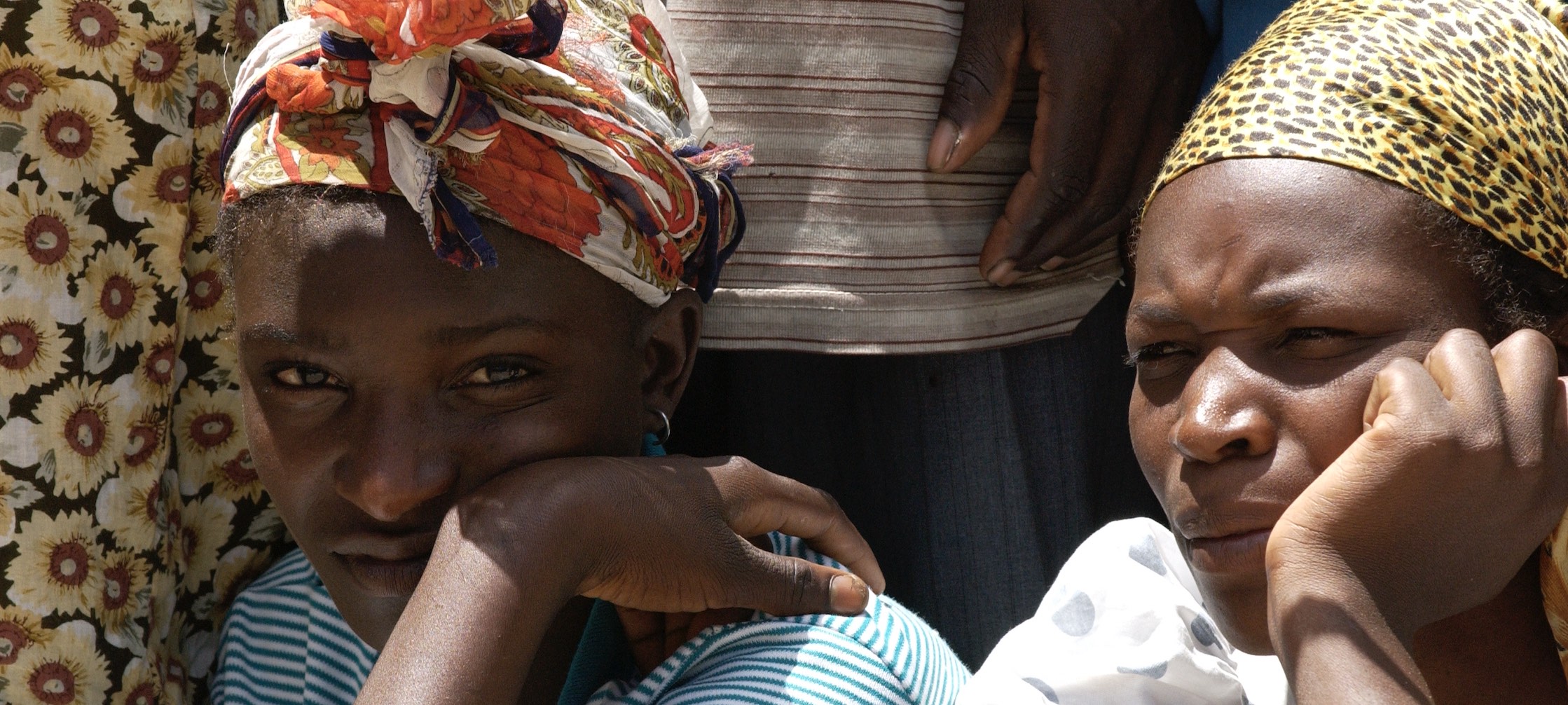
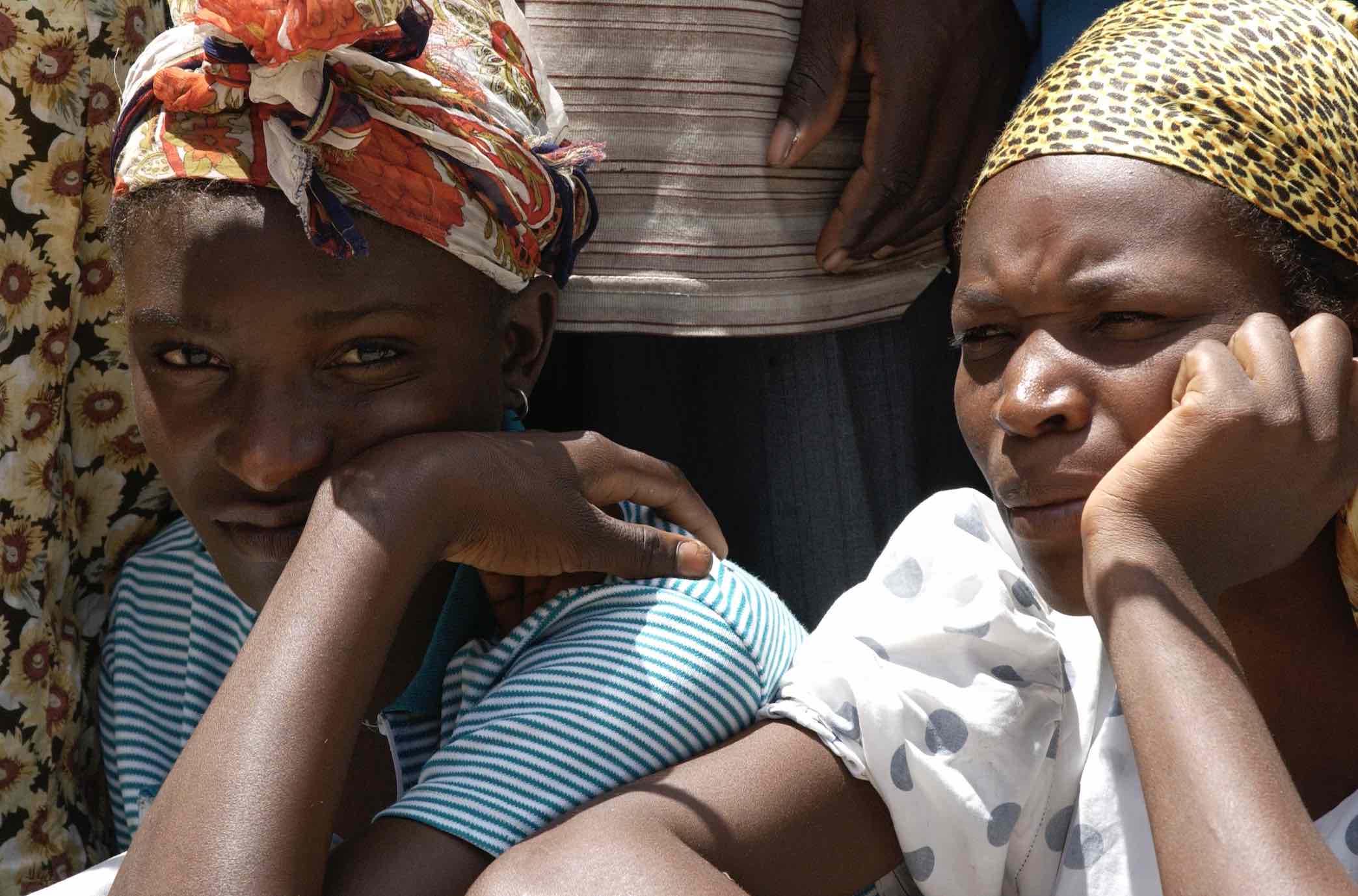
Accelerating Climate Change Adaptation Investment Planning to Enhance Resilience in Indonesia
The project supports the implementation and monitoring of the National Action Plan for Climate Change Adaptation in Indonesia (RAN-API). Operating at the national and sub-national levels, national-level activities are updating and strengthening the National Action Plan for Climate Change Adaptation (RAN-API) and enhancing the vulnerability monitoring system (SIDIK), incorporating a gender-responsive approach. Meanwhile, local activities are concentrating on risk-assessments and landscape-based adaptation for the archipelagic island site of Wakatobi. The project is focused on addressing challenges, including weak coordination and cross-sectoral information sharing, underrepresentation of vulnerable groups, and lack of adaptation criteria application in budget tagging.
The project “Accelerating Climate Change Adaptation Investment Planning to Enhance Resilience in Indonesia” addresses the barriers to adaptation planning and ensures that the National Action Plan for Climate Change Adaptation (RAN-API) is well coordinated, implemented, and monitored. The project has both a national and sub-national dimension: at the national level, it supports the next update of the RAN-API and enhances relevant assessment and budgeting systems. At the sub-national level, the project enhances landscape-based adaptation planning approaches in the archipelagic island site of Wakatobi that may be scaled up in the future. The Wakatobi District was chosen as an appropriate piloting site due to its manageable size, coastal location, and archipelagic landscape. As a marine national park, it also presents the opportunity to explore and develop ecotourism as a potential adaptation option.
Climate change impacts are already evident across various economic sectors in Indonesia. The most dominant disasters in Indonesia are floods, windstorms, landslides, and droughts, and these events are expected to be further exacerbated by climate change. The NDC (submitted in 2016 and updated in 2021, with an enhanced version released in 2022) has identified both mitigation and adaptation priorities to address these threats. Climate change adaptation has already been integrated into the country’s development planning through the National Action Plan for Climate Change Adaptation (RAN-API 2013–2025) and the fourth Medium Term Development Plan of Indonesia (RPJMN 2020-2024). While Indonesia’s adaptation planning process is considerably developed, several barriers to enhanced adaptation planning and implementation of adaptation options remain. These include a lack of effective coordination, the absence of an updated adaptation plan, inadequate focus on identifying adaptation options in vulnerable areas, unavailability of detailed information and vulnerability assessments for adaptation planning at national and sub-national levels, and challenges in tracking adaptation-related investments at national and sub-national levels. In addition, the lack of capacity for adaptation planning and budgeting is a cross-cutting issue for national ministries and sub-national governance structures.
The project aims at delivering the following results under the three main outcomes:
- RAN-API coordination and implementation strengthened;
- Legal standing for RAN-API to ensure planning and budgeting related to climate change adaptation in place;
- The RAN-API updated, including the formulation of a comprehensive financing strategy;
- Climate change budgeting system for adaptation enhanced.
- SIDIK enhanced, gender-responsive climate change risk assessment process developed;
- Existing science base for RAN-API reviewed and improved;
- Stakeholder capacity built for climate risk and impact assessment, and identifying suitable adaptation measures.
- Government staff in Wakatobi trained on gender-responsive climate risk assessments;
- Climate risk assessment for Wakatobi islands conducted using landscape-based adaptation;
- Government staff in Wakatobi trained on gender-responsive adaptation planning and budget tagging;
- A gender-responsive adaptation planning and budget tagging system developed and implemented in Wakatobi.
Outcome 1: The National Action Plan for Climate Change Adaptation (RAN-API) updated and climate change adaptation integrated in budgeting systems.
Outcome 2: Vulnerability and risk assessment process (SIDIK) enhanced at the national level for sectors identified in the adaptation component of the Nationally Determined Contributions (NDC).
Outcome 3: Integrated risk assessment and landscape-based adaptation planning and budgeting established in Wakatobi.
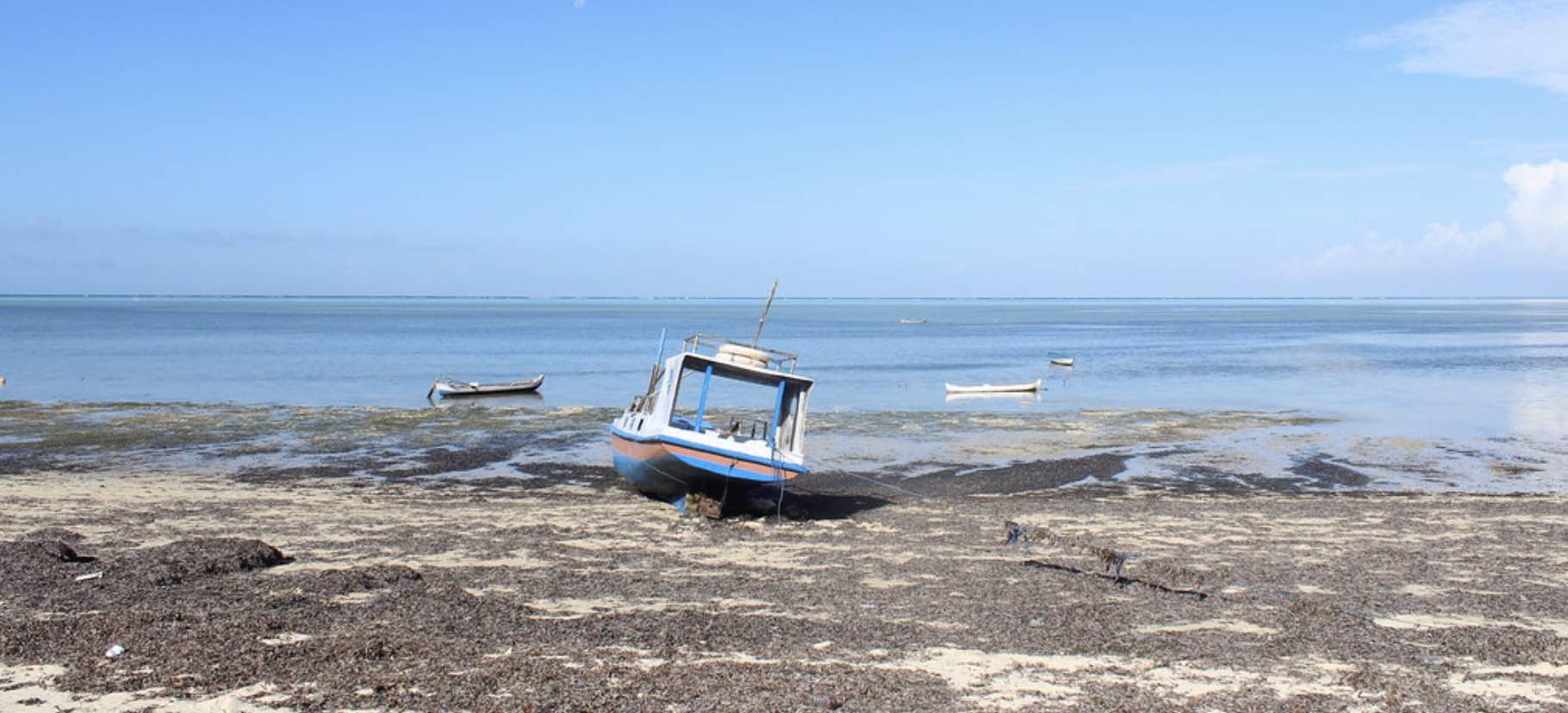
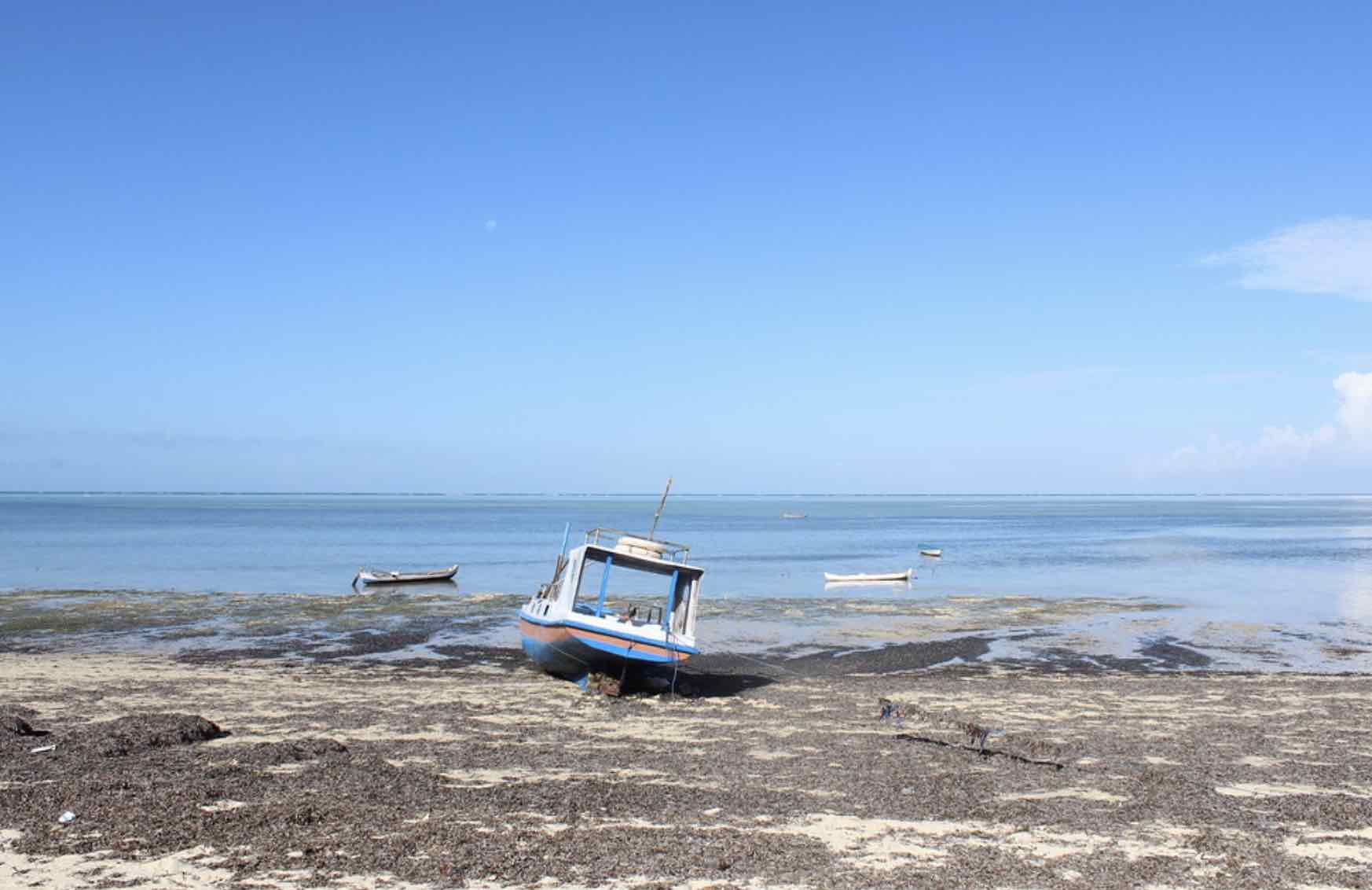
Advance the National Adaptation Plans process for medium term investment planning in climate-sensitive sectors and coastal areas in Liberia
The project’s objective was to support the Government of Liberia in advancing its National Adaptation Plan (NAP) process in climate-sensitive sectors: agriculture, energy, waste management, forestry, health, and coastal areas. The project was a first of its kind, approved by the Green Climate Fund (GCF) Board in November 2016 prior to the introduction of the GCF Readiness guidebook. The project informed the introduction and subsequent evolution of the guidelines on adaptation planning in Liberia.
Significant outcomes and outputs were achieved across four key areas. In Outcome 1, institutional frameworks were strengthened, and a climate change strategy was developed. Outcome 2 focused on expanding the knowledge base through risk assessments, economic studies, and a knowledge-sharing platform. Outcome 3 enhanced capacity for mainstreaming climate change into planning and budgeting, including technical guidelines and capacity-building programs. Lastly, Outcome 4 supported the scaling up of prioritized adaptation investments, identified policy options, and fostered public-private partnerships. These efforts contributed to Liberia's National Adaptation Plan, promoting resilience and sustainability in the face of climate change.
The GCF-funded project "Advance the NAPs process for medium-term investment planning in climate-sensitive sectors (i.e. agriculture, energy, waste management, forestry and health) and coastal areas in Liberia" aimed to strengthen institutional frameworks and coordination for the implementation of the NAP process, expand the knowledge base for scaling up adaptation, build capacity for mainstreaming climate change adaptation into planning and budgeting processes and systems, and formulate financing mechanisms for scaling-up adaptation.
In addition to the project delivery partner, the Environment Protection Agency and the National Climate Change Secretariat, other key partners included the Ministry of Finance and Development Planning, Ministry of Agriculture, National Disaster Management Agency, University of Liberia, Liberia Maritime Authority, Bureau of National Fisheries, Liberia National Department of Meteorology, Ministry of Mines & Energy, Ministry of Health, Liberia Institute of Statistics and Geo-Information Services, and the University of Liberia.
Liberia, like other developing countries, especially Least Developed Countries (LDCs), is vulnerable to the impacts of climate change. Despite having a low carbon footprint, the country anticipates severe consequences in key sectors, including agriculture, fisheries, forests, energy production related to the availability of water resources, coastal areas, and health. Approximately 70% of the population relies on agriculture for their livelihoods, with rural areas experiencing up to 80% vulnerability to food insecurity, according to the Environmental Protection Agency. Coastal regions, spanning 350 miles, face challenges from ongoing coastal erosion, sea level rise, storms, precipitation changes, and warmer ocean temperatures. Health risks include heightened vulnerability to diseases like malaria, cholera, and diarrheal diseases. Moreover, climate change may adversely affect hydroelectric generation from the Mount Coffee hydropower plant.
Liberia initiated its NAP process in 2015, establishing a roadmap in consultation with key stakeholders. This roadmap, grounded in the evaluation of existing climate initiatives and identification of gaps and capacity needs, serves as a guide for the short, medium, and long-term implementation of the NAP process in Liberia.
Key Project Results
Liberia submitted its NAP to the UNFCCC in 2021, with the project providing support in its development, including organizing a multi-sectoral working group to review and validate the final document. The project also achieved the following:
- Developed a comprehensive Climate Change Policy and Response Strategy.
- Supported the ratification of the Paris Agreement.
- Established the School of Environment and Climate Change at the University of Liberia, offering four graduate programs.
- Assessed climate change impacts on gender.
- Developed tools for mainstreaming climate change into programmatic activities.
- Conducted climate vulnerability/economic assessments and developed adaptation plans for key sectors.
- Implemented financial management and capacity support, including an enterprise resource planning system for the Environmental Protection Agency (EPA).
- Supported the national disaster risk assessment, development of the National Disaster Risk Reduction strategy, and launched the disaster database platform.
- Integrated economic assessments of adaptation studies in key sectors and developed a policy paper highlighting economic impacts of climate change in Liberia.
- Deployed 25 rainfall stations across the country to support the early warning system.
- Conducted capacity building for effective appraisal of investment priorities in sector ministries and mainstreamed climate change adaptation in sector strategies and plans.
- Established programs to inform and learn from the private sector on identifying climate variability and managing climate change (including setting up a private sector climate action alliance - Private Sector Working Group on Climate Change Adaptation Formed)
- Conducted policy analysis for future financing instruments/options for adaptation, including identifying alternative funding sources.
- Developed information products to support the private sector, particularly micro, small, and medium enterprises, in integrating adaptation into their investment planning.
Outcome 1: Strengthening of Institutional Frameworks and coordination for the NAPs process.
In the latter part of 2020, key activities under this outcome focused on enhancing the financial management and operational capacity of the Environmental Protection Agency (EPA) and the Climate Change Secretariat. This involved the implementation of an enterprise resource planning system. Additionally, a video documentary was developed to catalog essential project results, featuring feedback from key stakeholders and partners. The aim is to document lessons learned, challenges, success stories, and illustrate the meaningful impact the project has had in supporting climate change adaptation planning in Liberia.
1.1 Climate change strategy and action plan for adaptation developed as part of the NAP process.
Adaptation strategies and action plans for agriculture, forestry, fisheries, and coastal areas have been developed. Additionally, a national climate change adaptation strategy and action plan have been produced and formally launched, including the publication of Liberia’s NAP (2020-2030) document.
1.2. Coordination and monitoring enhanced for climate change adaptation program development across sectors.
The project assisted the Environmental Protection Agency (EPA)/National Climate Change Secretariat (NCCS) by conducting a capacity assessment and providing training in financial management, procurement, human resources, and other operational capacities. Subsequently, an Enterprise Resource Planning (ERP) System was established. The aim is to enhance the EPA's capacity in budgeting, accounting, governance, funds flow, financial reporting, internal control systems, and auditing for funds accessed from both the national budget and external sources.
Outcome 2: Expansion of the knowledge base for scaling up adaptation.
Liberia has faced a shortage of scientific data on climate impacts, including limited knowledge of current climate variability and risks, as well as the absence of an early warning system. The project expanded the knowledge base for scaling up adaptation interventions through various activities. This includes conducting economic assessments of adaptation strategies to inform funding proposals and national policies. Climate vulnerability and risk assessments were carried out to establish an evidence base for research, planning, and implementing adaptation action plans. Additionally, a knowledge-sharing platform was developed to facilitate information exchange and collaboration.
2.1. Risk assessments and economic impact studies in climate sensitive sectors conducted and incorporated in official data systems.
The project conducted a climate vulnerability and risk assessment for several sectors, including coastal, agriculture, forestry, fisheries, energy, and health (ongoing). Simultaneously, awareness-raising initiatives with relevant stakeholders were undertaken.
2.2. Effective knowledge sharing platform as a resource for climate relevant planning established.
The project conducted a gap analysis and collaborated with relevant IT staff and an international consulting firm to develop a climate change knowledge management platform. This platform, hosted at http://ccksp.gnf.tf, aims to expand knowledge and build capacities within the Liberian government. It serves as a repository for climate change-related data and information and offers training programs for a diverse audience, including practitioners, students, policymakers, and advocates. The project conducted at least six training sessions for staff from sectors such as waste management, forestry, energy, health, agriculture, and coastal management.
2.3. Climate Change disasters-related database developed.
The project procured and supplied meteorology equipment, including 25 rain gauges, for the Meteorology Department. These rain gauges have been strategically installed nationwide to enhance the production and distribution of weather information to various users, including farmers and fishermen. In addition, six staff members from the Meteorology Department received training on the operation of the system, ensuring effective utilization of the equipment.
Outcome 3: Strengthened capacity for mainstreaming CCA into planning, and budgeting processes and systems.
The project supported the formulation of mechanisms for scaling up adaptation investments and addressing financial gaps through various activities. This included assessing economic impacts and opportunities arising from climate change.
3.1. Technical guidelines for the personnel of the Ministry of Finance & Development Planning and other relevant Ministries, to mainstream climate change into budgeting and planning processes incorporating gender disaggregated data.
The project developed technical guidelines for personnel at the Ministry of Finance & Development Planning (MFDP) and other relevant ministries. These guidelines are designed to facilitate the mainstreaming of climate change considerations into budgeting and planning processes. Additionally, training sessions were conducted to familiarize personnel from MFDP and other sectoral entities with the use of these guidelines.
3.2. Capacity building programs on implementing adaptation investments and strategies established.
The project conducted a capacity assessment and developed a three-year climate change capacity development plan for the EPA and key sectoral agencies. The University of Liberia initiated its graduate program in 2019, the "School of Environmental Studies and Climate Change (SESCC)," in partnership with the EPA and UNDP. The project facilitated the provision of climate change adaptation textbooks to the school and fostered a partnership between the University of Liberia and the Least Developed Countries Universities Consortium for Climate Change (LUCCC), promoting research, knowledge sharing, and education in climate change. Eleven government staff members completed international training in climate change adaptation in Israel, and a south-south exchange tour for policymakers on knowledge sharing was successfully completed.
3.3. Monitoring and reporting system to track adaptation investments and implementation.
The project developed a detailed design for tracking climate finance, reviewed by stakeholders. An IT firm was hired to support the creation of a climate finance tracking system, integrated with monitoring and evaluation (M&E) indicators, and training sessions on the climate-proofing tool were conducted for the EPA team and other stakeholders. The National Monitoring System was assessed, resulting in a report with recommendations for integration into the national financial reporting systems, incorporating tracking tools and criteria to estimate adaptation financing in Liberia.
Outcome 4: Mechanisms to support scaling up of prioritized adaptation investments and addressing of financial gaps.
Outcome 4 included policy analysis for future financing instruments and options for adaptation. Alternative funding sources, such as private and local funds, were identified. The project created information products to support private sector engagement, with a focus on micro, small, and medium enterprises, helping them integrate adaptation into their investment planning. Furthermore, the project supported the development of costed investment plans for the agricultural sector and coastal areas in collaboration with partners. It successfully identified and prioritized at least two bankable projects and developed strategies to encourage private investments in new technologies and foster public-private partnerships for implementing climate change adaptation interventions.
4.1. Sector and area based costed investment plans prepared for scaling up adaptation in agriculture and coastal areas that take into account climate change risks and opportunities.
The project successfully developed and validated adaptation options for priority sectors, including agriculture, forestry, coastal areas, waste management, energy, and fisheries. This included the preparation of two bankable adaptation projects (agriculture and forestry, mangroves and ecotourism) for multi-sector implementation.
4.2. Policy options for scaling up financing for adaptation investments identified and recommended.
The project developed specific climate finance advisory products, offering detailed information on the country's climate finance landscape, criteria, funding amounts, and eligibility requirements. Stakeholders underwent climate finance training to enhance their understanding of available financing options. The project's identification of additional financing windows beyond traditional sources provides Liberia with opportunities to expand its resource mobilization for climate change action.
4.2. Foster Public Private Partnerships (PPPs) to support adaptation investments.
The project facilitated the creation of a private sector platform and developed knowledge products to support climate change adaptation planning. This included capacity-building support to encourage private sector engagement in climate action and attract private finance through partnerships and other financing options. The establishment of the Liberia Private Sector Climate Change Alliance served as a platform for collaboration between the private sector, government, and other stakeholders on climate initiatives. Great enthusiasm exists within the private sector to engage the government upon the realization that climate change represents a serious risk to private investment.
Crisis to Action: Liberia’s national adaptation plan addresses climate change (2023)
Liberia: Government Launches Country’s National Adaption Plan (2021)
Private Sector Working Group On Climate Change Adaptation Formed (2020)
National Adaptation Plans Report: Lessons from Liberia (2019)
University of Liberia launches new degree program on Environmental Studies (2019)
Building effective climate governance in Liberia (2018)
Need for Collective Partnership to Avoid Natural Hazards Stressed (2018)
Liberia Faces Natural Hazards Threat, EPA, UNDP Warn (2018)
University of Liberia to Commence Environmental Studies Soon (2018)
Liberia: 51 Vulnerable Youth and Women Trained in Production of Energy Efficient Cook Stoves (2018)
Integrating gender in the mitigation of climate change (2018)
EPA, UNDP Hold SDGs Training in Nimba (2018)
Liberia Launches National Policy and Response Strategy on Climate Change (2018)
UNDP and partners sign agreement on graduate programme for environmental studies (2018)
Liberia set to launch National Policy and Response Strategy on Climate Change (2018)
UNDP Equips EPA Monitoring System (2018)
National Disaster Management Agency, UNDP-Liberia Conduct Training on National Disaster Readiness (2018)
Government, Partners Launch National Adaptation Plan of Liberia (2018)
Environment chief: Why we’re prioritizing climate governance in Liberia (2018)
Liberia receives first instalment of US$2.2 million GCF grant for climate adaptation (2015)
GCF approves first grants for National Adaptation Planning in Liberia and Nepal (2015)
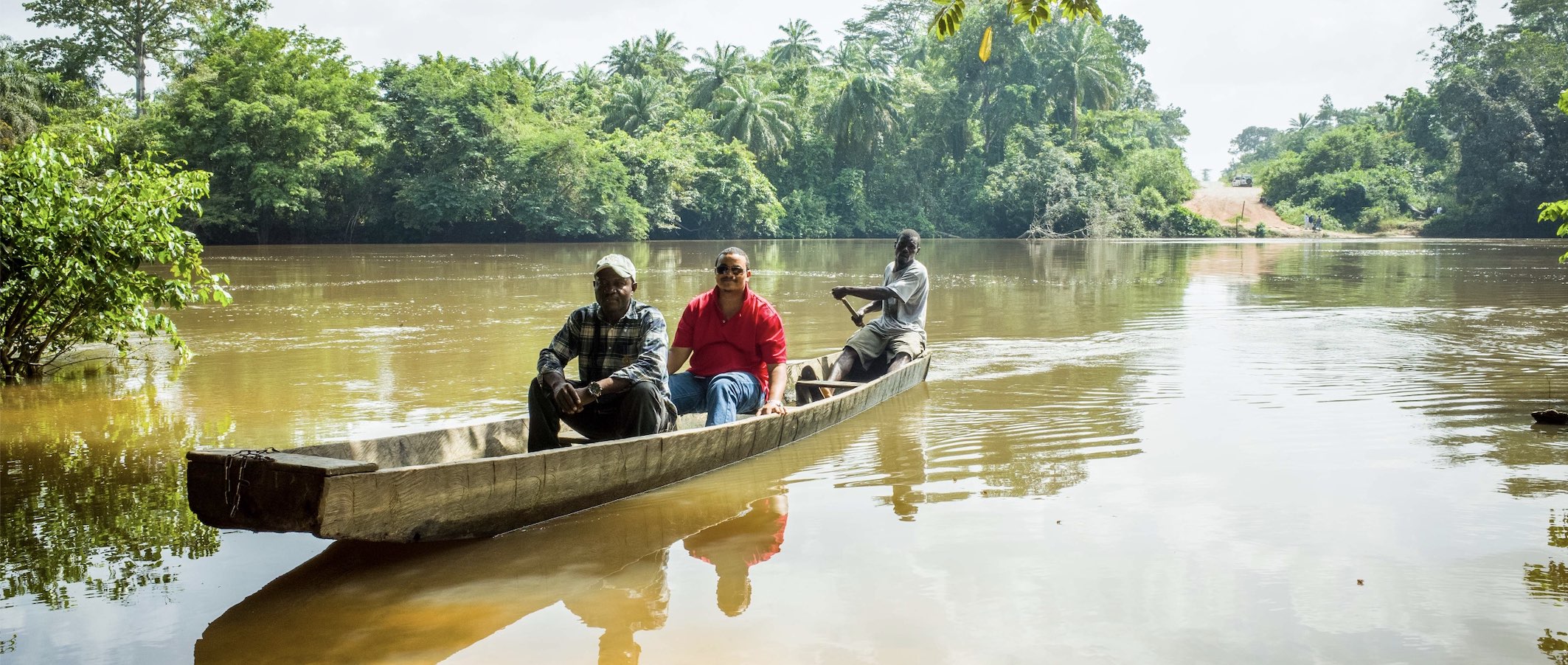
Advance the National Adaptation Plans process for medium term investment planning in climate-sensitive sectors and coastal areas in Liberia
The project’s objective was to support the Government of Liberia in advancing its National Adaptation Plan (NAP) process in climate-sensitive sectors: agriculture, energy, waste management, forestry, health, and coastal areas. The project was a first of its kind, approved by the Green Climate Fund (GCF) Board in November 2016 prior to the introduction of the GCF Readiness guidebook. The project informed the introduction and subsequent evolution of the guidelines on adaptation planning in Liberia.
Significant outcomes and outputs were achieved across four key areas. In Outcome 1, institutional frameworks were strengthened, and a climate change strategy was developed. Outcome 2 focused on expanding the knowledge base through risk assessments, economic studies, and a knowledge-sharing platform. Outcome 3 enhanced capacity for mainstreaming climate change into planning and budgeting, including technical guidelines and capacity-building programs. Lastly, Outcome 4 supported the scaling up of prioritized adaptation investments, identified policy options, and fostered public-private partnerships. These efforts contributed to Liberia's National Adaptation Plan, promoting resilience and sustainability in the face of climate change.
The GCF-funded project "Advance the NAPs process for medium-term investment planning in climate-sensitive sectors (i.e. agriculture, energy, waste management, forestry and health) and coastal areas in Liberia" aimed to strengthen institutional frameworks and coordination for the implementation of the NAP process, expand the knowledge base for scaling up adaptation, build capacity for mainstreaming climate change adaptation into planning and budgeting processes and systems, and formulate financing mechanisms for scaling-up adaptation.
In addition to the project delivery partner, the Environment Protection Agency and the National Climate Change Secretariat, other key partners included the Ministry of Finance and Development Planning, Ministry of Agriculture, National Disaster Management Agency, University of Liberia, Liberia Maritime Authority, Bureau of National Fisheries, Liberia National Department of Meteorology, Ministry of Mines & Energy, Ministry of Health, Liberia Institute of Statistics and Geo-Information Services, and the University of Liberia.
Liberia, like other developing countries, especially Least Developed Countries (LDCs), is vulnerable to the impacts of climate change. Despite having a low carbon footprint, the country anticipates severe consequences in key sectors, including agriculture, fisheries, forests, energy production related to the availability of water resources, coastal areas, and health. Approximately 70% of the population relies on agriculture for their livelihoods, with rural areas experiencing up to 80% vulnerability to food insecurity, according to the Environmental Protection Agency. Coastal regions, spanning 350 miles, face challenges from ongoing coastal erosion, sea level rise, storms, precipitation changes, and warmer ocean temperatures. Health risks include heightened vulnerability to diseases like malaria, cholera, and diarrheal diseases. Moreover, climate change may adversely affect hydroelectric generation from the Mount Coffee hydropower plant.
Liberia initiated its NAP process in 2015, establishing a roadmap in consultation with key stakeholders. This roadmap, grounded in the evaluation of existing climate initiatives and identification of gaps and capacity needs, serves as a guide for the short, medium, and long-term implementation of the NAP process in Liberia.
Key Project Results
Liberia submitted its NAP to the UNFCCC in 2021, with the project providing support in its development, including organizing a multi-sectoral working group to review and validate the final document. The project also achieved the following:
- Developed a comprehensive Climate Change Policy and Response Strategy.
- Supported the ratification of the Paris Agreement.
- Established the School of Environment and Climate Change at the University of Liberia, offering four graduate programs.
- Assessed climate change impacts on gender.
- Developed tools for mainstreaming climate change into programmatic activities.
- Conducted climate vulnerability/economic assessments and developed adaptation plans for key sectors.
- Implemented financial management and capacity support, including an enterprise resource planning system for the Environmental Protection Agency (EPA).
- Supported the national disaster risk assessment, development of the National Disaster Risk Reduction strategy, and launched the disaster database platform.
- Integrated economic assessments of adaptation studies in key sectors and developed a policy paper highlighting economic impacts of climate change in Liberia.
- Deployed 25 rainfall stations across the country to support the early warning system.
- Conducted capacity building for effective appraisal of investment priorities in sector ministries and mainstreamed climate change adaptation in sector strategies and plans.
- Established programs to inform and learn from the private sector on identifying climate variability and managing climate change (including setting up a private sector climate action alliance - Private Sector Working Group on Climate Change Adaptation Formed)
- Conducted policy analysis for future financing instruments/options for adaptation, including identifying alternative funding sources.
- Developed information products to support the private sector, particularly micro, small, and medium enterprises, in integrating adaptation into their investment planning.
Outcome 1: Strengthening of Institutional Frameworks and coordination for the NAPs process.
In the latter part of 2020, key activities under this outcome focused on enhancing the financial management and operational capacity of the Environmental Protection Agency (EPA) and the Climate Change Secretariat. This involved the implementation of an enterprise resource planning system. Additionally, a video documentary was developed to catalog essential project results, featuring feedback from key stakeholders and partners. The aim is to document lessons learned, challenges, success stories, and illustrate the meaningful impact the project has had in supporting climate change adaptation planning in Liberia.
1.1 Climate change strategy and action plan for adaptation developed as part of the NAP process.
Adaptation strategies and action plans for agriculture, forestry, fisheries, and coastal areas have been developed. Additionally, a national climate change adaptation strategy and action plan have been produced and formally launched, including the publication of Liberia’s NAP (2020-2030) document.
1.2. Coordination and monitoring enhanced for climate change adaptation program development across sectors.
The project assisted the Environmental Protection Agency (EPA)/National Climate Change Secretariat (NCCS) by conducting a capacity assessment and providing training in financial management, procurement, human resources, and other operational capacities. Subsequently, an Enterprise Resource Planning (ERP) System was established. The aim is to enhance the EPA's capacity in budgeting, accounting, governance, funds flow, financial reporting, internal control systems, and auditing for funds accessed from both the national budget and external sources.
Outcome 2: Expansion of the knowledge base for scaling up adaptation.
Liberia has faced a shortage of scientific data on climate impacts, including limited knowledge of current climate variability and risks, as well as the absence of an early warning system. The project expanded the knowledge base for scaling up adaptation interventions through various activities. This includes conducting economic assessments of adaptation strategies to inform funding proposals and national policies. Climate vulnerability and risk assessments were carried out to establish an evidence base for research, planning, and implementing adaptation action plans. Additionally, a knowledge-sharing platform was developed to facilitate information exchange and collaboration.
2.1. Risk assessments and economic impact studies in climate sensitive sectors conducted and incorporated in official data systems.
The project conducted a climate vulnerability and risk assessment for several sectors, including coastal, agriculture, forestry, fisheries, energy, and health (ongoing). Simultaneously, awareness-raising initiatives with relevant stakeholders were undertaken.
2.2. Effective knowledge sharing platform as a resource for climate relevant planning established.
The project conducted a gap analysis and collaborated with relevant IT staff and an international consulting firm to develop a climate change knowledge management platform. This platform, hosted at http://ccksp.gnf.tf, aims to expand knowledge and build capacities within the Liberian government. It serves as a repository for climate change-related data and information and offers training programs for a diverse audience, including practitioners, students, policymakers, and advocates. The project conducted at least six training sessions for staff from sectors such as waste management, forestry, energy, health, agriculture, and coastal management.
2.3. Climate Change disasters-related database developed.
The project procured and supplied meteorology equipment, including 25 rain gauges, for the Meteorology Department. These rain gauges have been strategically installed nationwide to enhance the production and distribution of weather information to various users, including farmers and fishermen. In addition, six staff members from the Meteorology Department received training on the operation of the system, ensuring effective utilization of the equipment.
Outcome 3: Strengthened capacity for mainstreaming CCA into planning, and budgeting processes and systems.
The project supported the formulation of mechanisms for scaling up adaptation investments and addressing financial gaps through various activities. This included assessing economic impacts and opportunities arising from climate change.
3.1. Technical guidelines for the personnel of the Ministry of Finance & Development Planning and other relevant Ministries, to mainstream climate change into budgeting and planning processes incorporating gender disaggregated data.
The project developed technical guidelines for personnel at the Ministry of Finance & Development Planning (MFDP) and other relevant ministries. These guidelines are designed to facilitate the mainstreaming of climate change considerations into budgeting and planning processes. Additionally, training sessions were conducted to familiarize personnel from MFDP and other sectoral entities with the use of these guidelines.
3.2. Capacity building programs on implementing adaptation investments and strategies established.
The project conducted a capacity assessment and developed a three-year climate change capacity development plan for the EPA and key sectoral agencies. The University of Liberia initiated its graduate program in 2019, the "School of Environmental Studies and Climate Change (SESCC)," in partnership with the EPA and UNDP. The project facilitated the provision of climate change adaptation textbooks to the school and fostered a partnership between the University of Liberia and the Least Developed Countries Universities Consortium for Climate Change (LUCCC), promoting research, knowledge sharing, and education in climate change. Eleven government staff members completed international training in climate change adaptation in Israel, and a south-south exchange tour for policymakers on knowledge sharing was successfully completed.
3.3. Monitoring and reporting system to track adaptation investments and implementation.
The project developed a detailed design for tracking climate finance, reviewed by stakeholders. An IT firm was hired to support the creation of a climate finance tracking system, integrated with monitoring and evaluation (M&E) indicators, and training sessions on the climate-proofing tool were conducted for the EPA team and other stakeholders. The National Monitoring System was assessed, resulting in a report with recommendations for integration into the national financial reporting systems, incorporating tracking tools and criteria to estimate adaptation financing in Liberia.
Outcome 4: Mechanisms to support scaling up of prioritized adaptation investments and addressing of financial gaps.
Outcome 4 included policy analysis for future financing instruments and options for adaptation. Alternative funding sources, such as private and local funds, were identified. The project created information products to support private sector engagement, with a focus on micro, small, and medium enterprises, helping them integrate adaptation into their investment planning. Furthermore, the project supported the development of costed investment plans for the agricultural sector and coastal areas in collaboration with partners. It successfully identified and prioritized at least two bankable projects and developed strategies to encourage private investments in new technologies and foster public-private partnerships for implementing climate change adaptation interventions.
4.1. Sector and area based costed investment plans prepared for scaling up adaptation in agriculture and coastal areas that take into account climate change risks and opportunities.
The project successfully developed and validated adaptation options for priority sectors, including agriculture, forestry, coastal areas, waste management, energy, and fisheries. This included the preparation of two bankable adaptation projects (agriculture and forestry, mangroves and ecotourism) for multi-sector implementation.
4.2. Policy options for scaling up financing for adaptation investments identified and recommended.
The project developed specific climate finance advisory products, offering detailed information on the country's climate finance landscape, criteria, funding amounts, and eligibility requirements. Stakeholders underwent climate finance training to enhance their understanding of available financing options. The project's identification of additional financing windows beyond traditional sources provides Liberia with opportunities to expand its resource mobilization for climate change action.
4.2. Foster Public Private Partnerships (PPPs) to support adaptation investments.
The project facilitated the creation of a private sector platform and developed knowledge products to support climate change adaptation planning. This included capacity-building support to encourage private sector engagement in climate action and attract private finance through partnerships and other financing options. The establishment of the Liberia Private Sector Climate Change Alliance served as a platform for collaboration between the private sector, government, and other stakeholders on climate initiatives. Great enthusiasm exists within the private sector to engage the government upon the realization that climate change represents a serious risk to private investment.
Crisis to Action: Liberia’s national adaptation plan addresses climate change (2023)
Liberia: Government Launches Country’s National Adaption Plan (2021)
Private Sector Working Group On Climate Change Adaptation Formed (2020)
National Adaptation Plans Report: Lessons from Liberia (2019)
University of Liberia launches new degree program on Environmental Studies (2019)
Building effective climate governance in Liberia (2018)
Need for Collective Partnership to Avoid Natural Hazards Stressed (2018)
Liberia Faces Natural Hazards Threat, EPA, UNDP Warn (2018)
University of Liberia to Commence Environmental Studies Soon (2018)
Liberia: 51 Vulnerable Youth and Women Trained in Production of Energy Efficient Cook Stoves (2018)
Integrating gender in the mitigation of climate change (2018)
EPA, UNDP Hold SDGs Training in Nimba (2018)
Liberia Launches National Policy and Response Strategy on Climate Change (2018)
UNDP and partners sign agreement on graduate programme for environmental studies (2018)
Liberia set to launch National Policy and Response Strategy on Climate Change (2018)
UNDP Equips EPA Monitoring System (2018)
National Disaster Management Agency, UNDP-Liberia Conduct Training on National Disaster Readiness (2018)
Government, Partners Launch National Adaptation Plan of Liberia (2018)
Environment chief: Why we’re prioritizing climate governance in Liberia (2018)
Liberia receives first instalment of US$2.2 million GCF grant for climate adaptation (2015)
GCF approves first grants for National Adaptation Planning in Liberia and Nepal (2015)

Enhancing Montenegro’s capacity to integrate climate change risks into planning
The project aims to improve Montenegro’s institutional capacity for long-term adaptation planning by strengthening its institutional coordination framework, expanding the technical capacities of those responsible and involved in adaptation planning, enhancing the evidence base required for effective decision-making, and developing a resource mobilization strategy. The project focuses on the national level and operates across four priority sectors—water resources, public health, agriculture, and tourism—aligned with existing government policies.
The overarching objective of the project “Enhancing Montenegro’s capacity to integrate climate change risks into planning” is to improve the country’s institutional capacity for long-term adaptation planning. To achieve this, the project focuses on (1) improving the institutional coordination framework and increasing institutional capabilities, (2) increasing climate information and identifying potential adaptation measures, and (3) identifying financial requirements and resources to fund adaptation investments.
The projected impacts of climate change in Montenegro include increased frequencies and intensities of floods and droughts, water scarcity, and intensification of erosion, sedimentation, snowmelt, sea level rise, as well as damage to water quality and ecosystems. To address climate change risks, the Government of Montenegro has taken several foundational steps to develop a long-term adaptation planning process that is anchored in the National Climate Change Strategy by 2030 and Montenegro’s National Communication. While these steps provide a starting point, several gaps were identified: (1) An underperforming coordination framework, (2) a lack of institutional capacity, (3) insufficient information, and (4) a lack of finance to fund adaptation investments, and (5) a private sector that has a low capacity to understand and respond to climate vulnerabilities and risks.
This project aims to establish a foundation for systematic and iterative adaptation planning in Montenegro by identifying climate risks and adaptation options. Focusing on four key sectors, the strategic approach aims to enhance resilience, facilitate access to international funding sources, and engage the private sector in providing financial resources. The project will also strengthen the awareness and capacities for adaptation planning of multiple stakeholder groups to create a better learning environment and iterative adaptation planning and action. The project is the first stage (Phase I) of what is intended to be a two-staged approach to utilizing Green Climate Fund support for adaptation planning. The second stage will build on Phase I, amongst others, by expanding the adaptation planning process to additional sectors, integrating the private sector further, and enhancing strategies for financing and tracking adaptation finance.
Project Results
Output 1.1: Institutional Capacity for Adaptation Planning Assessed and Enhanced
Capacity gap assessments have been conducted, focusing on key government stakeholders, the private sector, and civil society organizations. An assessment of the capacity of institutions in terms of adaptation to climate change and green development was performed.
The evaluation process included more than 300 actors, institutions at the national and local level, public and private companies, operating in various fields. The assessment aimed to determine the public sector’s ability to plan and implement climate change adaptation processes, while analysing the need for capacity building and training of staff. Within this research, the institutions were evaluated concerning seven elements defined by the Capacity Assessment Tool, specifically designed for the implementation of this activity in Montenegro. The results of the initial analysis indicated a general weak systemic coordination and cooperation climate change adaptation. Capacity assessments ranged from low to baseline, while strong capacities to respond to climate challenges were not identified for any of the assessed institutions.
Moreover, collaboration with the Transition towards the low emissions and climate-resilient economy in the Western Balkans and Turkey (TRATOLOW) project and the GoM adaptation focal point was established, resulting in the drafting of a Gender and Climate Change Adaptation Training program. Furthermore, a concept for the Dialogue for Development seminar series was developed and a two-day training workshop on Monitoring and Indicators for Adaptation was conducted in collaboration with TRATOLOW.
In 2023, efforts focused on further improving the gap assessment, developing online training modules, and sustaining the Dialogue for Development Seminar Series. Additionally, the project finalized the design of the Training Terms of Reference (ToR) for the Institute of Hydrometeorology and Seismology (IHSM) staff, initiating the subsequent training process.
Output 1.2: Institutional Coordination to Support Adaptation Planning Strengthened
In the realm of institutional coordination, the project supported the redesign of the National Council for Sustainable Development (NCSD), resulting in the Government of Montenegro upgrading the NCSD as a unit in the Government in 2021. Activities in 2022 saw the operationalization of the NCSD, including key appointments and capacity-building initiatives. The project played a supportive role in amendments to the Law on Protection from the Negative Effects of Climate Change.
In a broader sense, the main task of the Council is to direct and monitor the implementation of policies that determine the country’s development direction and ensure the sustainability of these policies. The Council is a platform for sharing knowledge, expertise, information, and practical experience. In addition to the representatives of relevant institutions, business community and NGOs, the representatives of youth and the media are also members of the NCSD.
The new NCSD held its first constitutive session during the 36th meeting in December 2022. Legal advisory support was extended for further amendments to the Law on Protection from the Negative Effects of Climate Change. The project also aimed to finalize the formation of a working group for Climate Change Adaptation (CCA) and provide support for legislative changes and additions.
In 2023, the project formed a working group for climate change adaptation and continued providing support for legislative changes, reinforcing the legal framework for climate change adaptation.
Output 2.1: Gender-specific climate change-Driven risks and vulnerabilities in priority sectors identified, broad goals, and potential adaptation measures developed
The project has made significant strides in identifying gender-specific climate change-driven risks and vulnerabilities. In 2021, a company was selected to review and consolidate climate risk assessments, engaging in a consultation process and conducting stocktaking workshops.
In 2022, the project prepared initial drafts of climate risk assessments, conducted initial consultations, and initiated the selection process for lead international and local experts. Assessments for climate change-driven risks in priority sectors were finalized and activities progressed with a combined approach involving the lead writer of the NAP and local experts.
In 2023, a company was selected to expand on the prepared assessment and develop guiding materials for the Government of Montenegro (GoM). Additionally, efforts focussed on developing gender-sensitive adaptation goals, targets, and indicators.
Output 2.2: National Adaptation Planning Processes Established
In 2021, a company was selected to undertake a public awareness communications campaign. During this phase, the project participated in a national workshop on climate change and gender, presenting its work to a broader audience.In 2022, the project selected lead international and local experts, finalized the inception report, and outlined plans for a Gender Action Plan and Gender Communication Plan.
Activities included ongoing coordination with the public awareness communications campaign and also focused on increasing awareness and participation in climate change adaptation, supporting events such as Green Schools Day 2022, the presentation of the Second Voluntary National Report (VNR) at the High-Level Political Forum on Sustainable Development (HLPF) in New York, and the Green Montenegro International Film Fest (GMIFF).
In 2023, the project prepared the draft National Adaptation Plan (NAP) for public consultation.
Output 3.1: Mechanisms for Funding Adaptation Investments Identified
The project initiated the selection process and inception phase for activities related to identifying mechanisms for funding adaptation investments in 2022. This involved the development of Terms of Reference (ToR) and subsequent selection processes, which were further developed in 2023.
Output 3.2: Private Sector Engagement in Adaptation Strengthened
During 2022, the project developed Terms of Reference (ToR) for activities related to strengthening private sector engagement in adaptation. The inception phase for these activities was initiated, and implementation of the selection process to further enhance private-sector engagement was developed in 2023.
Outcome 1: Adaptation planning governance, institutional coordination, and technical capacity strengthened;
Outcome 2: An enhanced evidence base for designing gender-sensitive adaptation solutions;
Outcome 3: An adaptation finance mobilization strategy developed.
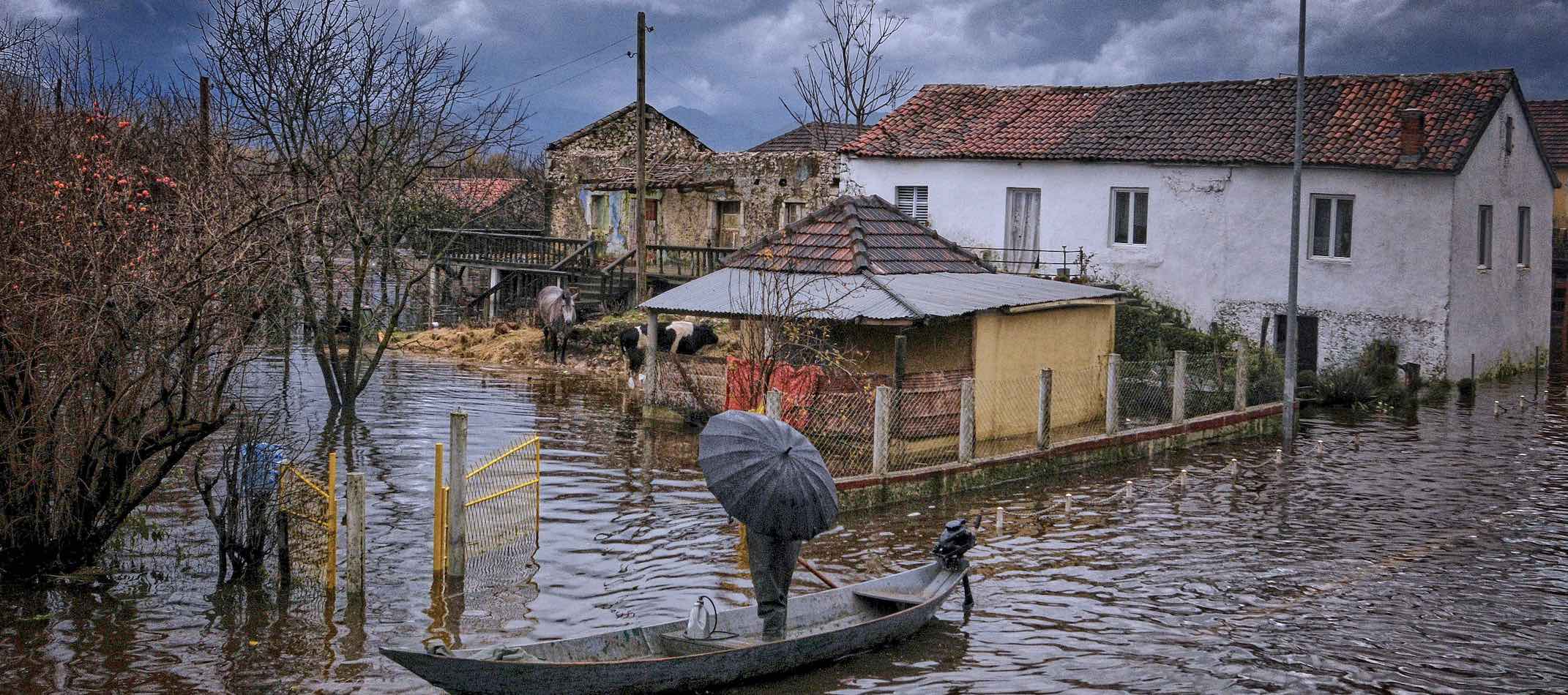
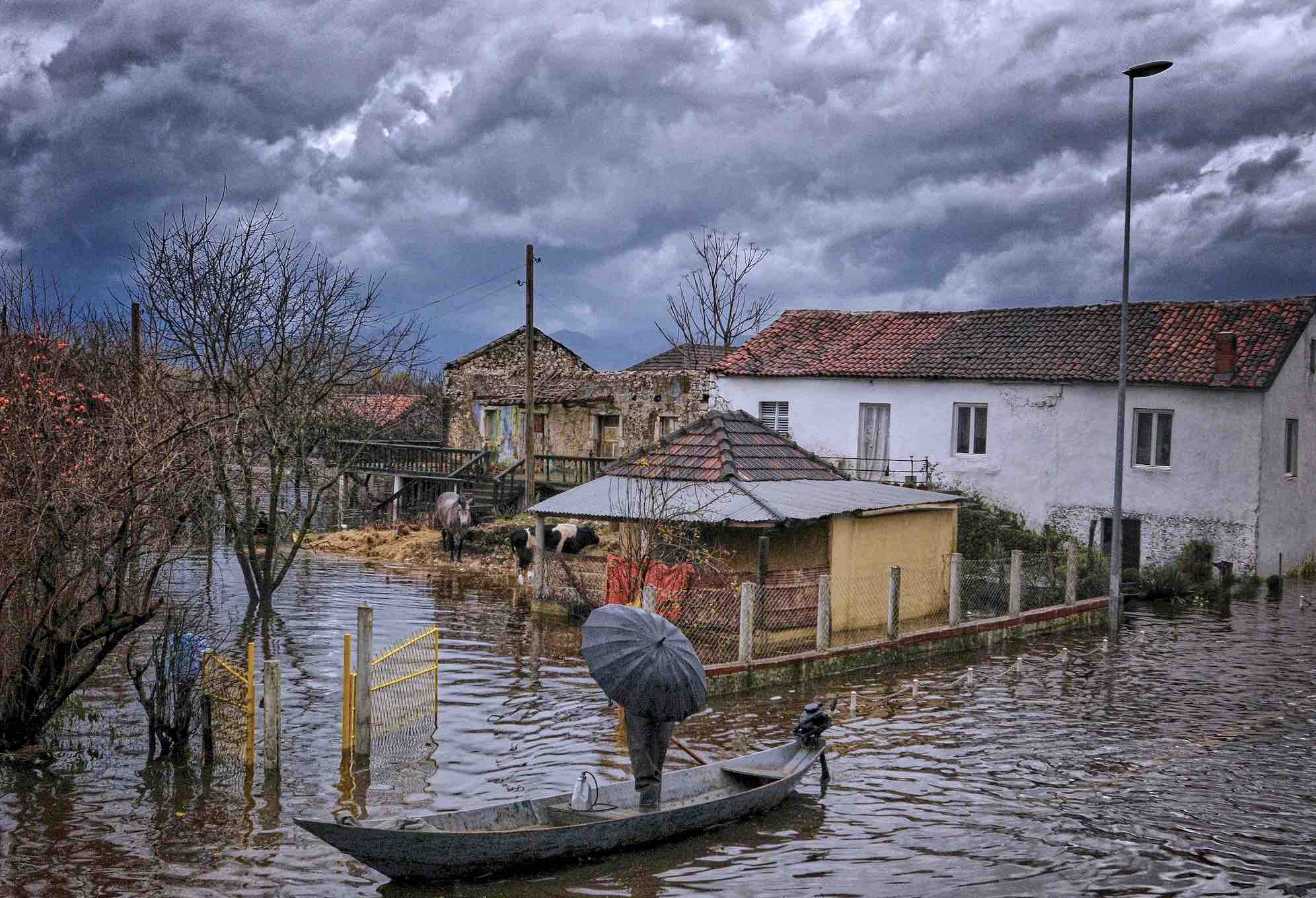
Advancing medium and long-term adaptation planning and budgeting in Niger
The project activities aim to strengthen adaptation-related prioritization and planning, financing and capacity development, supporting Niger in integrating climate change into medium- and long-term development planning and budgeting through the NAP process. Reducing Niger’s vulnerability to climate change requires greater investments and greater integration of climate change adaptation and disaster risk reduction into ongoing development programmes. The project works in synergy with other initiatives. It supported the National Disaster Risk Prevention and Management Facility to integrate climate change into its strategy, and the development of the NDC through gender studies and climate scenarios. The project also enables the implementation of Niger's national climate change strategy. The project addresses the main challenges in integrating climate change adaptation into planning and budgeting in Niger, as identified in its NAP Stocktaking Report.
The exposure to climate risks, associated with its position as a Sahelian landlocked country, makes Niger one of the most vulnerable countries in the world. The 42.8 percent of the GDP, and 80 percent of the workforce are employed in the agriculture, forestry and livestock sectors. Climate change is expected to worsen climate risks over the next decades, with an increase in the frequency of droughts, resulting in a decrease in agricultural production, an increase in grazing pressure on pastoral ecosystems, and consequently soil erosion on a mass scale, threatening food security; and floods resulting from the heavy rainfall. The country was ranked 188 out of 188 in the UNDP’s Human Development Index in 2015, with 89.8 percent of the population living in multidimensional poverty.
The foundations for the NAP process have been built through the preparation of the National Adaptation Programme of Action (NAPA) in 2006 with support from UNDP and the Global Environment Facility (GEF). The NAPA identified urgent and most immediate needs in seven vulnerable sectors and fourteen priority adaptation interventions. The National Climate Change Policy (PNCC) adopted in 2013 provides the overall strategic framework to tackle climate change. To move beyond urgent and immediate needs, and towards a medium-term approach, Niger intends to integrate climate change into medium- and long-term development planning and budgeting through the NAP process, under its obligation to the UNFCCC and as stated in its PNCC. This process will contribute to ensuring that the country’s long-term development strategy - starting with its Sustainable Development and Inclusive Growth Strategy (SDDCI) and its National Economic and Social Development plans - be based on an understanding of climate-related risks and opportunities for inclusive growth and sustainable development.
Niger has been advancing its NAP process by conducting a preliminary stock take of relevant initiatives on climate adaptation and mainstreaming to identify gaps and needs. A NAP roadmap was subsequently drafted, which outlined the main steps and timeline of advancing the NAP process in Niger.
This project will be steered at country level by the Executive Secretariat of the National Council of Environment for Sustainable Development (SE/CNEDD), which is the coordinating body for all Rio Conventions and climate change-related initiatives and the National Designated Authority to the GCF. It will closely engage the Ministry of Planning and the Ministry of Finance, as well as key sectoral ministries, national training and research institutions and civil society, including the private sector. It will closely coordinate with other related initiatives such as the GEF-LDCF adaptation planning in the water sector project, the EU-funded PARC-DAD and the World Bank Pilot Programme for Climate Resilience. The project is aligned with the “Nigeriens Nourish the Nigeriens” Initiative (Initiative 3N), the Sustainable Development and Inclusive Growth Strategy (SDDCI), the National Economic and Social Development Plan (PDES), and the National Climate Learning Strategy.
Project updates
The draft NAP was developed through consultations (ministries and technical institutions, representatives of communities, the private sector, religious and traditional leaders, women's and youth organizations, civil society and media), combined with an analyses of climate data and vulnerability to climate change and assessments and capacity building of stakeholders. 25 adaptation options were identified and prioritized for the five sectors (livestock, health, transport, forestry and wetlands) and the draft NAP document was enriched and validated through regional workshops; the final validation through a national workshop is scheduled for 2022.
In collaboration with other entities, including the Executive Secretariat of the National Environment Council for Sustainable Development (CNEDD), a monitoring and evaluation system is being set up to track the progress of climate change adaptation initiatives.
In addition, a communication and knowledge management strategy has been developed to disseminate the results of the NAP process.
Output 1: National mandate, strategy and steering mechanism are in place and gaps are assessed and addressed
Output 2: Preparatory work for the NAP undertaken to develop a knowledge-base and compile a NAP
Output 3: NAP implementation facilitated
Output 4: Mechanisms for Reporting, Monitoring and Review of NAPs and adaptation progress in place
Output 5: Funding strategy for the NAP and CCA is available
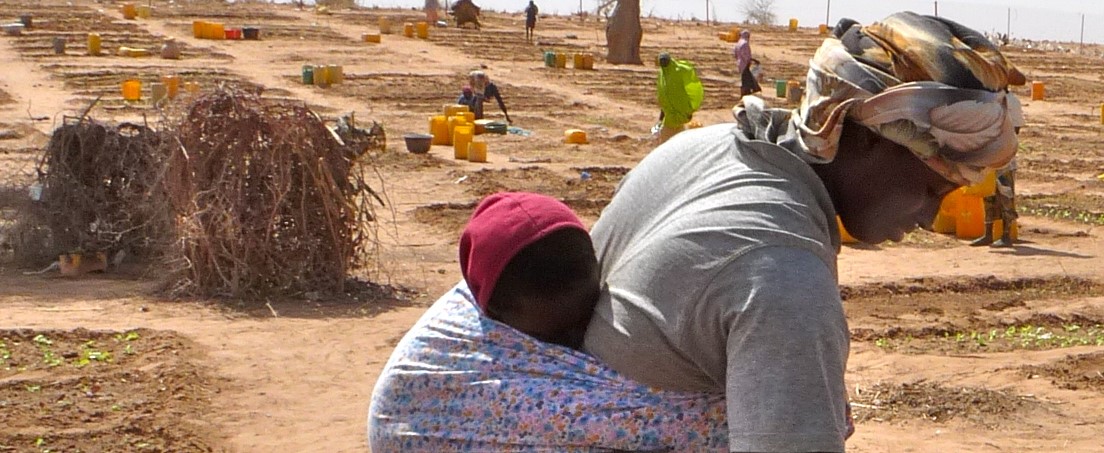
Advancing Papua New Guinea’s National Adaptation Plan
The project aims to mainstream climate change into planning and policy frameworks and increase awareness amongst key stakeholders at national and subnational levels. The project supports the country’s Climate Change (Management) Act by strengthening existing frameworks and systems, enhancing the capacities of key stakeholders to effectively contribute to the adaptation planning process, and establishing a mechanism to sustain the process beyond the life of the project. The National Adaptation Plan (NAP) takes a phased approach to implementation, with the first phase focusing on four priority sectors: agriculture, health, transport, and infrastructure. Cross-cutting priority areas also aim to enable the effective and sustained implementation of climate change adaptation strategies and measures by addressing policy, institutional, coordination and technical barriers with a whole-of-society approach.
Under the UNFCCC process, Papua New Guinea’s first National Adaptation Plan (NAP) provides a strategic framework to support country-driven efforts to effectively mainstream adaptation to climate-induced risks within sectoral planning processes. The NAP takes a phased approach to implementation that considers the institutional frameworks, and the first phase focuses on priority sectors: agriculture, health, transport, and infrastructure. By defining a series of strategic actions under cross-cutting and sectoral areas that seek to facilitate the operationalization of the NAP and guide the country’s efforts to achieve Papua New Guinea’s adaptation targets by 2030 through a gender-responsive and whole-of-society approach.
The "Advancing Papua New Guinea’s National Adaptation Plan" project is aimed at strengthening institutional and technical capacities for iterative development of a NAP and integration of climate change adaptation into national and subnational planning and budgeting processes in Papua New Guinea. To achieve this, the project has informed results under three outcomes: 1) Strengthened coordination mechanism for multi-sectoral adaptation planning and implementation at different levels, 2) Integration of climate change risks into key national and sectoral policies and formulation of a National Adaptation Plan, and 3) Establishment of a financing framework for climate change adaptation action for medium-to long-term. This phase of the project has focused on four priority sectors – agriculture, health, transport, and infrastructure, along with cross-cutting areas. A second phase of the project is expected to address gaps in the remaining five priority sectors, in addition to addressing gaps in regulatory frameworks and the evidence base.
Project rationale
Papua New Guinea is highly vulnerable to climate change and is among the ten countries with the highest disaster risk worldwide (World Risk Index, 2021). Papua New Guinea is experiencing increased climate variability through changes in temperature and precipitation, increased intensity of tropical storms, increased coastal erosion and saline intrusion and inundation caused by sea-level rise. Climate change has already begun to cause considerable impact in Papua New Guinea, triggering climate-related hazards, such as heatwaves, landslides, storms, and floods, alongside slow-onset impacts of increased disease and droughts. These impacts have caused substantial damage and affect the daily lives and livelihoods of the nation.
Building resilience to climate change has featured in the national dialogue and political commitments for over a decade. Recognized as an acute challenge for the country, the Government and partners have committed to mainstream climate action in their planning and delivery. Major policy initiatives such as the Vision 2050 and the National Strategy for Responsible Sustainable Development and legislation such as the Climate Change (Management) Act (CCMA) have broadened efforts to include better natural resource management, conservation and sustainable growth. Growing legal architecture has supported these efforts. Papua New Guinea’s geography, its economic base, its exposure to external shocks and limited capacity across the Government, however, make these challenges difficult to address.
Project results
The project has delivered the following results under the three Outcomes.
Outcome 1: The coordination mechanism for multi-sectoral adaptation planning and implementation at different levels is strengthened.
- Reviewed legal and policy barriers to the integration of climate change into development planning
- Developed capacities of the CCDA to steer the climate change coordination and integration process
- Strengthened mechanisms for regularly reviewing and updating adaptation priorities.
Outcome 2: Climate change risks are integrated into key national and sectoral policies and the NAP is formulated.
- Established a system for economic analysis and appraisal of priority adaptation options and integrate climate change adaptation priority interventions into the Environment Act, National Disaster Mitigation Policy and MTDP3, and sector-specific policies in Agriculture, Health, Infrastructure and Transport
- Formulated the NAP with a specific focus on Agriculture, Health, Infrastructure and Transport sectors, as well as cross-cutting areas.
Outcome 3: Financing framework for climate change adaptation action in medium-to long-term is established
- Developed a NAP financing and investment strategy, including the development of four sector-specific idea notes on priority adaptation interventions to feed into Papua New Guinea’s country programme under the GCF Readiness project.
Outcome 1: The coordination mechanism for multi-sectoral adaptation planning and implementation at different levels is strengthened.
Outcome 2: Climate change risks are integrated into key national and sectoral policies and NAP is formulated.
Outcome 3: Financing framework for climate change adaptation action for medium-to long-term is established.
Momase Region Consultation Workshop (2021)
Exposure: Advancing together in the Asia Pacific (2021)
Southern Region Consultation Workshop (2021)
National Consultation Workshop (2021)
CCDA EMTV (Television Station) Story (2021)
Southern & Highlands Region Combined Adaptation Planning Training (2022)
Momase Region Adaptation Planning Training (2022)
New Guinea Islands Region Adaptation Planning Training (2022)
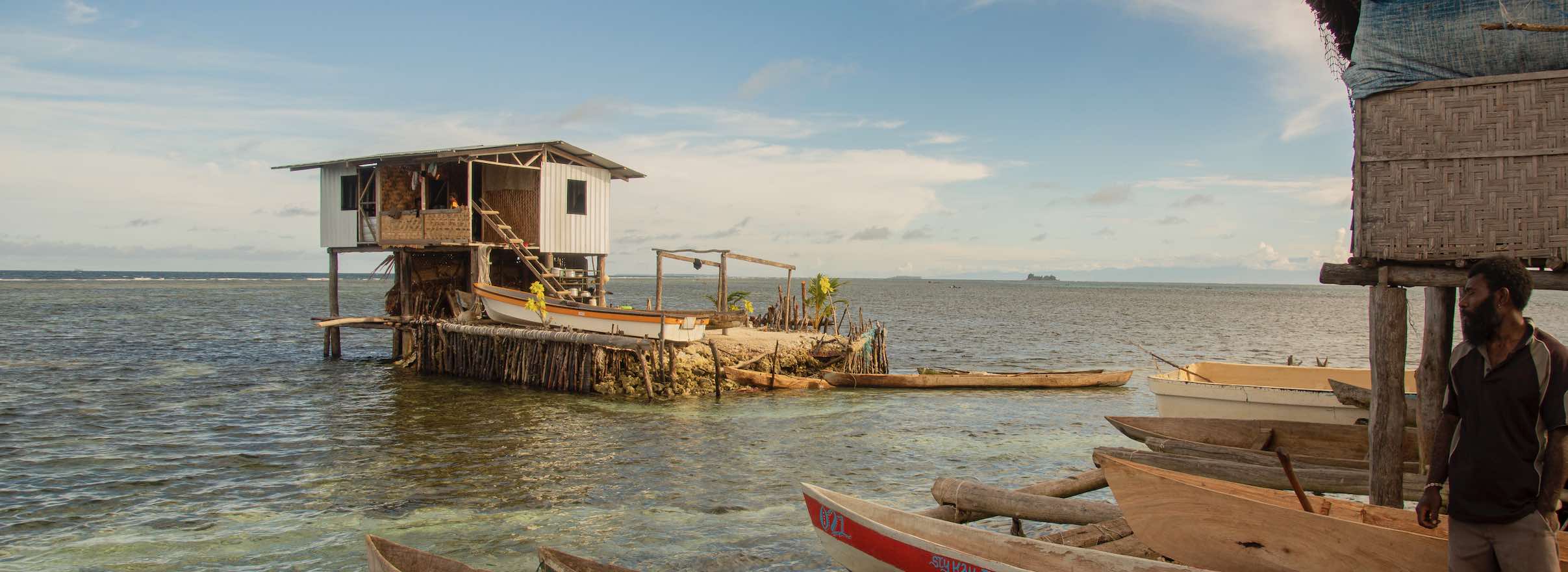
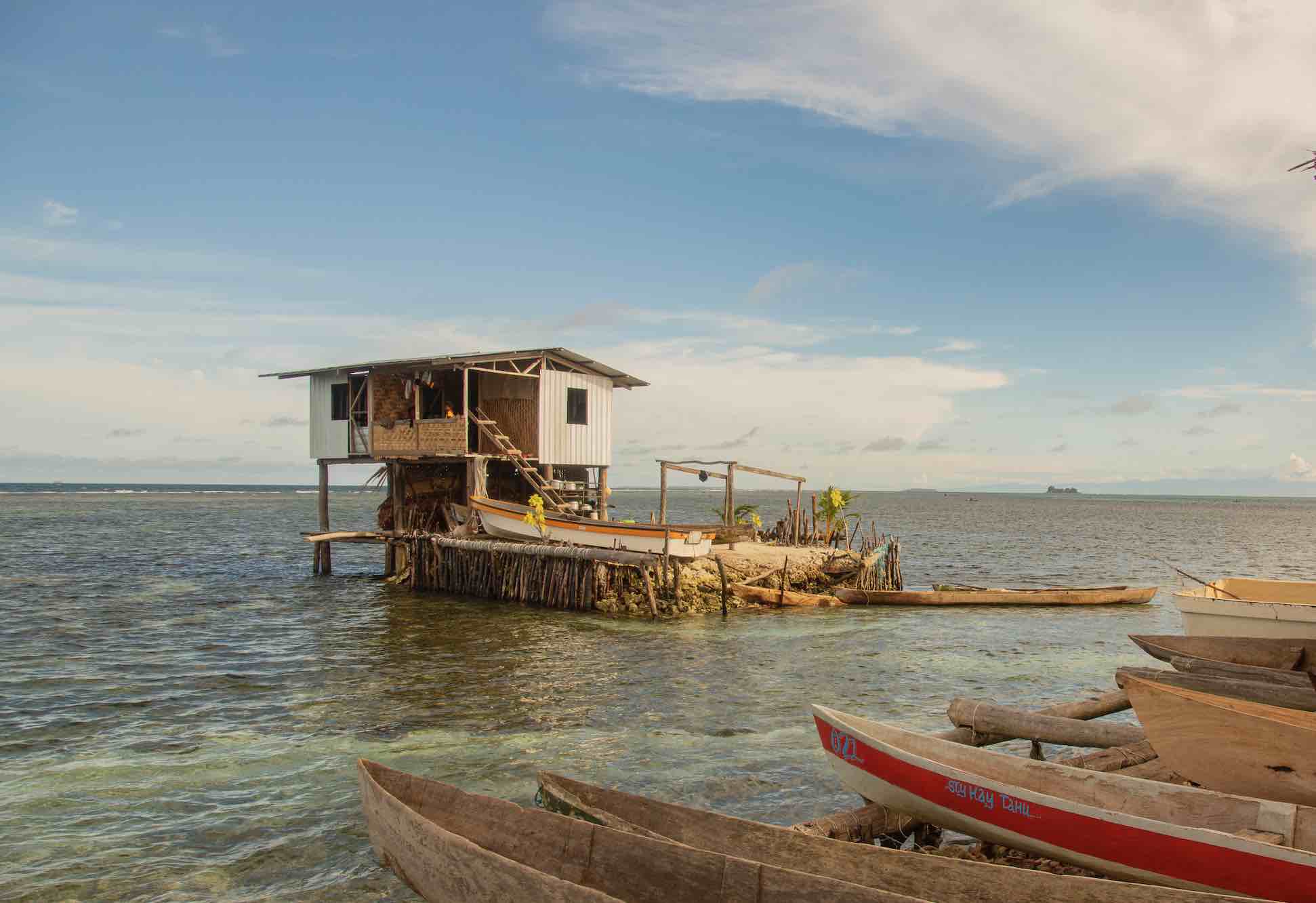
NAP-2: Advancing Moldova’s National Climate Change Adaptation Planning process
Funded by the Green Climate Fund (GCF) Readiness Programme, the "NAP-2: Advancing Moldova’s National Climate Change Adaptation Planning Process" project is supporting the Government of Moldova to develop the country’s national development plan for climate change adaptation. The project aims to 1) strengthen and operationalize the national steering mechanism for climate change adaptation, 2) improve the long-term capacity for planning and implementation of adaptation actions through CCA technologies; and 3) improve the mainstreaming of climate change adaptation in priority sectors through the increased alignment of national development priorities.
The project aims to address the barriers to prioritizing national investments in climate change adaptation and increase the human and financial capacity for the implementation of the priority actions identified during the NAP-1 project, including those that will emerge under this NAP-2 initiative. To accomplish this overall goal, the project activities have been designed to address the gaps and barriers also identified in the NAP-1 and the Stocktaking Report. Through the NAP process, Moldova is realizing a long-term paradigm shift towards climate resilience in its national and sectoral development planning.
The Government of Moldova sees the National Adaptation Planning (NAP) process as a key to achieving the adaptation objectives outlined in its 2014 Climate Change Adaptation Strategy and its Nationally Determined Contributions (NDC), as well as the continued mainstreaming of climate change considerations into its policies and budgeting processes. The NAP process was launched in 2014 through consultations with national stakeholders with the support of the Austrian Development Agency (ADA) and UNDP.
Over the last decade, the Republic of Moldova has experienced several extreme events, such as droughts and major floods. These events, coupled with the gradual impacts of rising average temperatures and uneven precipitation patterns throughout the year, have adversely affected the country's economy and the well-being and health of its population. Severe droughts are recurring more frequently causing significant economic losses. In 2007 and 2012, droughts resulted in estimated losses of approximately USD 1 billion and USD 400 million, affecting 80% of the rural population. Meanwhile, flood damages in 2008 and 2010 are estimated at around USD 120 million and USD 42 million, respectively. Climate projections suggest a continued rise in average temperatures and an additional 12 days with zero precipitation, posing ongoing challenges for the country.
In addition to the key implementing partner, the Ministry of Environment, other project partners include the Ministry of Infrastructure and Regional Development, Ministry of Energy, Ministry of Finance, Ministry of Health, and the National Commission on Climate Change.
Expected results:
- National Climate Change Adaptation Strategy updated with the NAP-2 overarching goal and sector-specific adaptation objectives articulated in the Climate Change Adaptation Action Plans of health and forestry sectors, and in the Development Action Plans of the transport, energy and building sectors.
- Monitoring and Evaluation system with improved data analysis to support decision-making developed.
- Climate Change Adaptation Capacity Development Plan updated and adopted by the five key sectors.
- Climate change information and knowledge management portal that supports the NAP process and mainstreaming of climate change adaptation considerations launched.
- Adaptation Plans for seven district towns developed.
- Technology Roadmap for each key sector (transport, energy, water, forestry and health) developed based on Technology Needs Assessment.
- 5 investment project ideas developed to be submitted to Green Climate Fund.
Project updates
The NAP-2 project actively engages with the Minister of Environment and key stakeholders, facilitating ongoing discussions on project activities, accomplishments, and challenges. Recognizing the need for a coordinated approach to climate change activities, the Ministry of Environment requested an analysis of the existing regulatory framework, aiming to identify gaps and propose operational coordination mechanisms. This effort has involved exploring options to upgrade the National Commission on Climate Change (NCCC), with potential integration with other bodies such as the National Council on Sustainable Development or the National Commission on Emergency Situations.
The National Climate Change Adaptation Programme (NCCAP) until 2030 and its Action Plan, approved by the Government on 30 August 2023, has been developed in a participatory manner that supports the alignment of the national adaptation goals with the aims of the Paris Agreement in transport, energy, water, forest, and health sectors. Guidelines and tools for conducting Climate Change Impact, Vulnerability, and Risk Assessments (CCIVRA) at sector and organization levels have been developed. The project has ensured that these tools are not only comprehensive but also user-friendly. Additionally, a Monitoring and Evaluation (M&E) framework for the NAP process has been devised.
The project has delivered the Climate Change Capacity Development Plan (CDP) which lays the foundation for strengthening institutional capacities to mainstream climate change considerations into sectorial policies and implementation of the policies. This has involved consultations to define sector-specific adaptation targets and integrating them into sectorial development plans. In addition, the Climate Change Knowledge Management Roadmapwas developed which provides a better understanding of the national capacities needed to produce, collect, and use climate change information and knowledge. This forms the foundation for the Climate Change Information and Knowledge Management Platform, a one-stop shop for all climate-related information under development.
The project has supported the assessment of the meteorological and hydrological network which enabled the State Hydro-meteorological Service of Moldova (SHS) to seek further support from Sweden, World Bank and Meteo-France International in terms of data digitalization and improving meteorological and hydrological monitoring. Market research was finalized for the introduction of new climate services and increasing awareness of the importance of hydrometeorological and climate services. Moreover, the SHS has developed the Law and Regulation on hydrometeorological activity and methodology for calculating tariffs for climate services.
Regarding the technology needs assessment (TNA), the ‘Identification and prioritization of adaptation sectoral technologies’ and ‘the Barrier Analysis and Enabling Framework of TNA analysis’ were conducted involving relevant stakeholders from the five priority sector Working Groups (water, transport, energy, forestry, health). As a result, 115 technology fact sheets (TFS) as well as elaborated versions of the 53 TFS were produced and measures to overcome barriers were identified.
Other recent activities have included further consultations on improving coordination mechanisms, creating a training curriculum and master's course on climate change adaptation in the health sector, and developing the NAP-3 project document, including a roadmap and financing plan. Furthermore, other activities have involved training, data collection methodologies, aligning national codes with EU standards, and supporting the Ministry of Infrastructure and Regional Development with construction standards/codes for at-risk assets in the transport and construction sectors.
The project objectives will be achieved through three outcomes, focusing on strengthening national capacities for mainstreaming climate change adaptation considerations, producing actionable climate risks and vulnerability assessments, and implementing effective methods, tools, and information systems to better inform decision-making on climate risks. The three outcomes build on each other in a progressive and interrelated approach that strengthens the national conditions for adaptation.
Outcome 1: National steering mechanism for climate change adaptation strengthened and operationalized
Outcome 2: Long-term capacity on planning and implementation of adaptation actions improved
Outcome 3: Mainstreaming of climate change adaptation is improved through the increased alignment of national development priorities, in the priority sectors (forestry, health, energy and transport).










